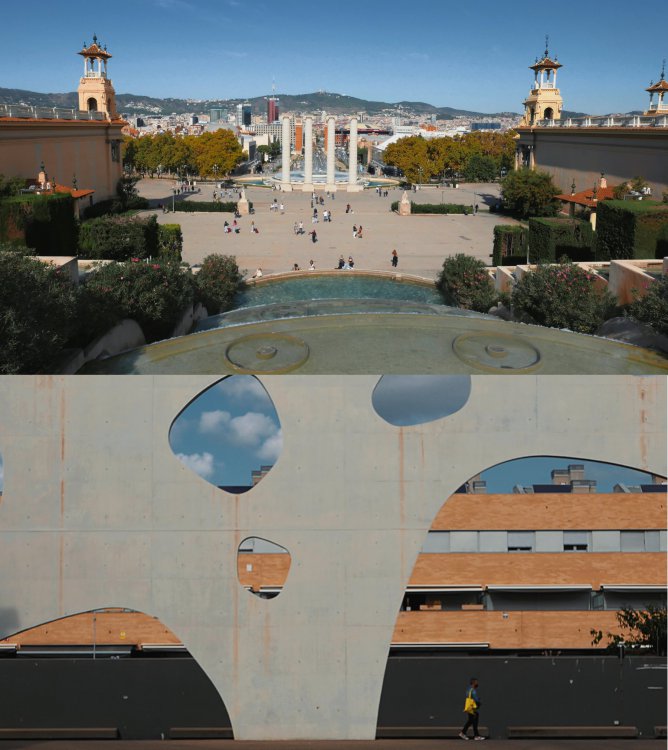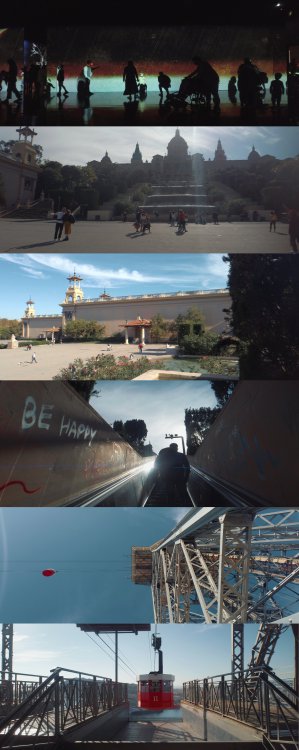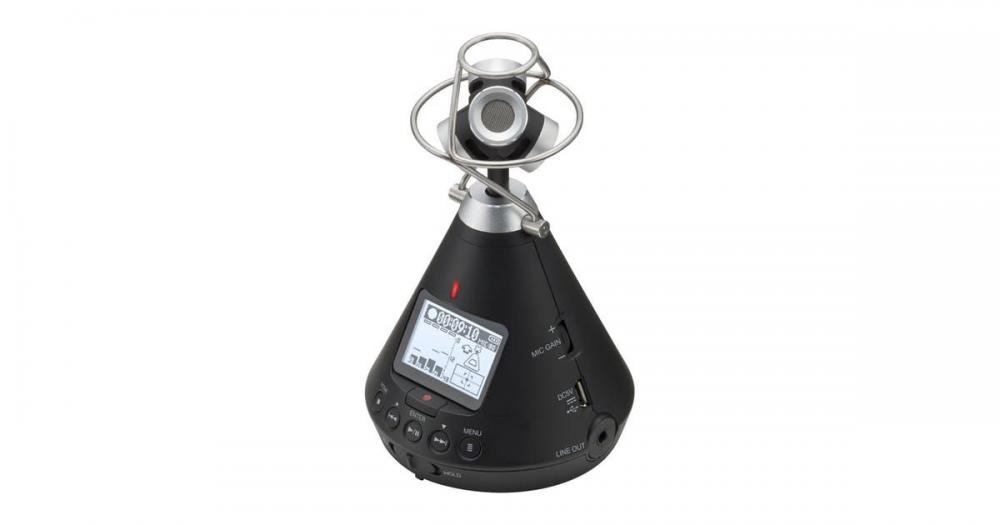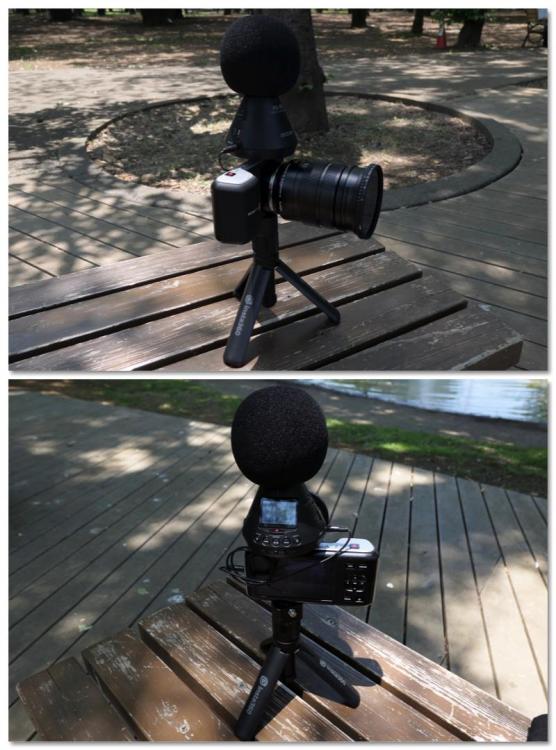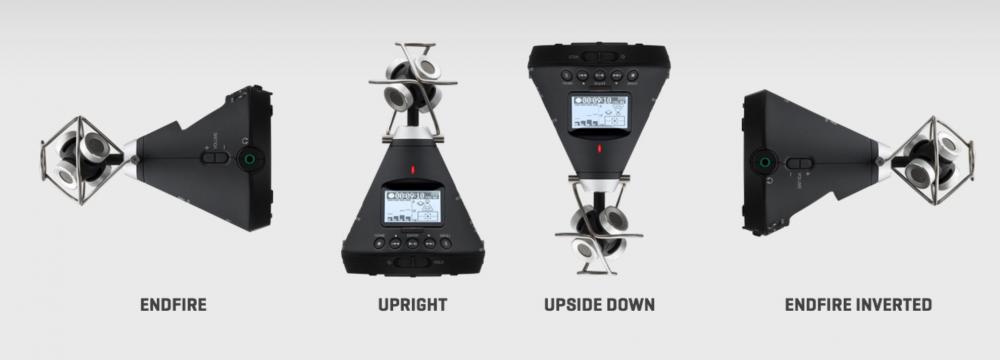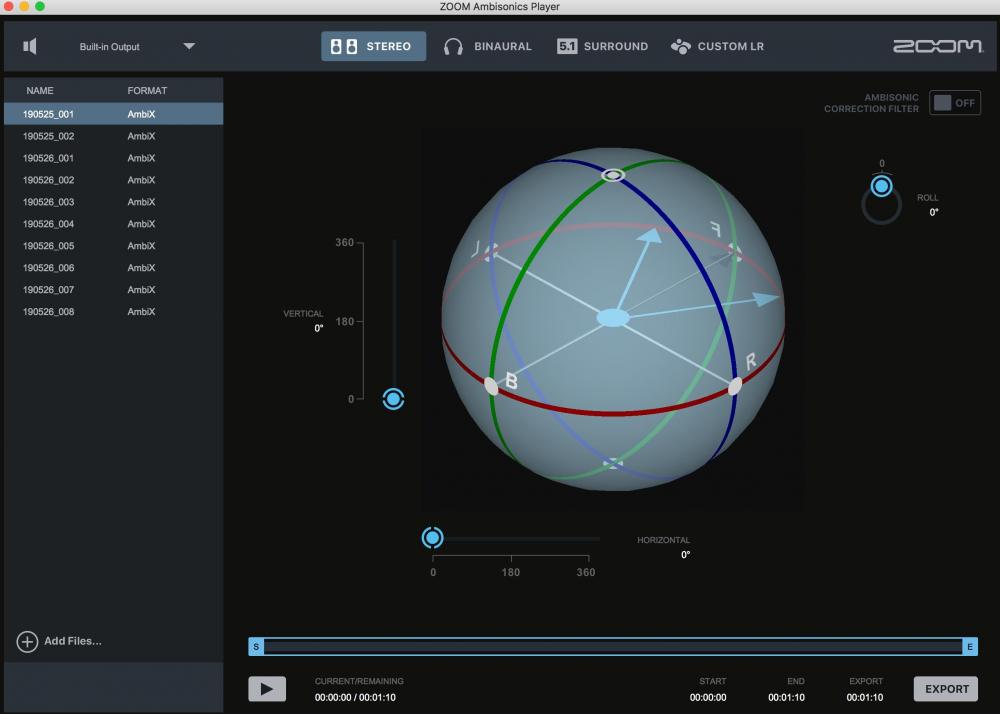Leaderboard
Popular Content
Showing content with the highest reputation on 12/02/2021 in all areas
-

Just bought a new camera for 2022 - the small but mighty GX85
John Matthews and one other reacted to Marcio Kabke Pinheiro for a topic
This lens had one of the best video AF in my GX9. In fact, for vlogging product shots (that ones which you put the product in front of you, AF picks it, and goes back to your face when the product is removed) it worked VERY well.2 points -

Stereo mic recommendations please (for in-camera ambient location/field recording)
Matt James Smith ? and one other reacted to kye for a topic
@Matt James Smith ? I have several pieces of advice.. they're a little controversial, but well intended. Firstly, don't believe ANYONE on the internet, even me, when discussing "quality". Only trust your own ears by listening to samples taken by competent people in real situations similar to what you will do. I produced music as a hobby for over a decade, and have been into hifi ($250k+ systems) for over two decades and made a lot of components from scratch (DACs, preamps, amps, speakers, acoustic treatments, etc), so I have a solid basis in the technical aspects of what is going on as well as understanding theory vs practice vs snake oil vs psychoacoustics. I went through a phase of researching microphones and while I watched/listened to dozens of video "reviews" of various products, I didn't find a single review where the person understood even the first thing about audio, or what is important. Secondly, don't confuse audio quality with audio frequency response. This seems to be a common thing with "reviewers". They compare two microphones, they like the EQ on one better than the other, and declare that the quality is better on that one. This is bullshit. EQ is so easily adjusted in post that it's practically a non factor. Judging the sound from a mic without processing it is like saying the iPhone has better quality than an Alexa because the Alexa footage looked all grey and dull-looking. Understand what matters for your context. If you are making recordings that will be used within a larger mix, processed, and will only form the background to a visually driven piece then obviously you won't need (or be able to appreciate) as much quality as if you are producing nature videos with long sections of straight binaural audio. Best of luck!2 points -

Stereo mic recommendations please (for in-camera ambient location/field recording)
Matt James Smith ? and one other reacted to BTM_Pix for a topic
I did a quick thing about it when I first picked one up. Nothing special in terms of testing, just putting it on top of the camera while recording some fixed position wallpaper stuff. The audio in the video in the thread is from its down mixed live binaural line output straight into the camera (it can produce this output simultaneously whilst its recording the individual tracks of each capsule to the recorder). The original files are downloadable so you can try it with their software to experiment with the re-positioning aspect. It is an interesting device to supplement other microphones rather than replace them but I'm hoping at some point that Zoom produce a higher end one with better capsules.2 points -
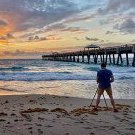
Stereo mic recommendations please (for in-camera ambient location/field recording)
Matt James Smith ? and one other reacted to Trek of Joy for a topic
Interesting topic. I've been looking for something to capture ambient sound as well. The Rode Stereo Videomic X is at the top of my list too. But yeah, not easy to come by these days. Everything else that mounts on cam is low budget stuff. I've also been considering using the zoom H3VR until I can find the X, but using it in the field while shooting looks like a bit of a challenge LOL! https://www.bhphotovideo.com/c/product/1434530-REG/zoom_zh3vr_h3_vr_360_vr_audio.html/?ap=y&ap=y&smp=y&smp=y&lsft=BI%3A514&gclid=Cj0KCQiA15yNBhDTARIsAGnwe0Uv0Np2mQoQNyITewv0KPjHEsczvXVA9vdTPe30B27cIBfELOBKyQEaAg1yEALw_wcB Hopefully some other options pop up here. Cheers Chris2 points -
It really depends on how much you're looking to spend. I've used a Zoom H1 into a camera before, and currently use two Tascam TM-2X into my GH5 and G85 for sporting events where I want crowd noise. Both those two are pretty budget friendly and are "good enough" though I'd love to eventually upgrade. I've heard good things about the Sennheiser MKE 440 and is probably what I'll end up upgrading to. Audio Technica also has the AT8022 and the more expensive BP4025 but there aren't a ton of reviews out there for them.2 points
-
Sony CineAlta Venice 2 8.6K Cinema Camera
Mark Romero 2 reacted to A_Urquhart for a topic
Only took half a dozen posts to get on to AF......or lack thereof 🤦♂️ High end cinema cameras don't really need AF. For a start, there aren't many lenses out there used in cinema that have internal focus motors. Secondly, there is a thing called a 1st AC or 'Focus Puller' that is usually on set when a camera of this calibre is used. Thirdly, there are plenty of manufacturers such as Arri, CineRT, Teradek RT, Preston etc etc that are working on and already provide AF in their lens control systems that CAN be used with manual cine lenses. Pulling focus is part of the narrative, until a lens or AF System can read a script, I don't thing AF will be common in Cinema. Lastly, Imagine watching a film on the big screen.......I would MUCH prefer to see the organic way a Focus puller finds focus to how many AF systems occasionally hunt and snap into focus. It would look awful on the big screen and extremely distracting. I'm not against AF all together.....it has a time and a place but in a camera like this? I don't think so. An autofocus system on a true cinema camera can be used to complement the Focus Puller and used in certain cases. It is part of the focus pullers tool kit and therefore I believe, that it should be incorporated into the lens control system rather than the camera itself.1 point -
^^LOL^^ Big fan of zooms for my nature/wildlife documentation, my 2xS1 setups contain the 24-105 kit and a EF-adapted Sigma 150-600 Contemporary (soon to be replaced by a native L-mount 150-600 Sport) and my low-light setups are the EF-adapted f/1.8 Sigma's 18-35 and 50-100 Arts and f/2.8 120-300 Sport. My primes (EF-adapted f/1.4 Sigma 20, 50 and 85) are specialized for night scenarios and see the least amount of usage. None of these lenses are slouches and I could care less if any suffered from vignetting, lack of corner sharpness or focus breathing, my subjects are always middle-thirds. Zooms all the way for this shooter (well, mostly! Ha!).1 point
-
Ahh, my bad, I just reread your original post...you want to add ambience via 3.5mm stereo mic to your XLR mics, got it! That so, I've enjoyed my RØDE VideoMicro and Audio-Technica Pro24-CM very much as ambient mics going back to my 5D MarkII/7D days though I was not a fan of either mic's shock mounts (the former is front heavy with the furry requiring delicate balance on the single lyre, and the latter allowed too much handling noise through, though if one could/would work with/around those limitations the mics both sounded and worked great for my needs at the time). Since moving to Panasonic I am in love with their own DMW-MS2 mid-side mic for my S1's (I have one for each body plus a backup unit!), have you considered (or added to your list) Canon's own DM-E1 offering either directional shotgun or switchable 90° and 120° stereo fields (methinks with those abilities this might very well be a mid-side mic though they don't specifically state such)? To me, mics are like shoes, ya gotta try a lot on to see which fit best! 😉 Keep us posted on your decision!1 point
-
Just bought a new camera for 2022 - the small but mighty GX85
kye reacted to billdoubleu for a topic
No, I would love to give it a try someday. I'm waiting for one of these Chinese monitor manufacturers to compete with Atomos in the prores recorder space. I'm a horder when it comes to original footage. Even when I put together finished videos I can't seem to let go of the original clips. So, the higher bit rates would bury me in TBs of files in no time. I will eventually purchase an external monitor either way. I'm a manual focus guy and I find it beyond annoying to nail focus with these puny screens we are supposed to just accept as the standard on mirrorless cameras. I would love to use my phone for this purpose, but that's never as easy as it sounds. Hell, I can't even get the Panasonic app to work with my cameras anymore! As a side note; the tilt screen on the gx85 is my favorite thing. I can't stand looking off to the side to see my g85 screen.1 point -

Just bought a new camera for 2022 - the small but mighty GX85
John Matthews reacted to kye for a topic
Thanks, and yes, I had figured out the battery similarities - what a happy surprise! IIRC I got a genuine battery with the GF3 and two third-party ones, which died a long time ago I think and are now gone, but to my surprise the genuine one still goes strong and so is enjoying renewed use. Of course, I've been playing with the GF3 from time to time as well, so it's not like it was gathering dust. I will have a look through that thread, thanks for pointing it out. Have you investigated using an external recorder with the GX85? If so, how did it go? I would imagine that you're already aware of this, so this is more of a PSA than a reply as such. It's always good to test resolution and lens characteristics by shooting RAW stills, as well as in every codec you intend to shoot with the camera, plus the post-processing you are likely to do. This is because although a RAW still might reveal a softness to a lens, that might not be visible using the cameras 4K mode which might downscale the image, or the 1080p mode if you use that, and of course the NR / sharpening / processing / compression will obscure considerable fine detail or softness as well. I also suggest that you grade the test clips, render a timeline in your normal delivery format, and if you self-publish (eg, streaming platforms) then upload the output for that site to re-compress your footage as well. Then view it sitting at a normal distance in a slightly darkened environment and see what is visible then. Literally no-one has ever said "I spent the extra $2K getting the top-end glass and even though the difference is completely obscured by YouTube compression so none of my viewers will ever be able to tell the difference I still think it was completely worth it"!1 point -
Hi Matt, I am curious as to what type of sound environments (i.e. do/have you take/taken to taking SPL measurements of your locations?) you'll be looking to record in, it should help better inform community response. I bring the matter of "better understanding one's sound environment" up as it helped me decide on how to move forward with a mic choice for my nature/wildlife recording adventures for the upcoming year. I recently resurrected my Roland R-26 (which had found light usage due to noisy handling issues when trying to use the internal mics) for use with an XLR stereo mic. That choice was the Audio-Technica BP4029 mid-side mic...which, quite literally, just arrived yesterday! Spec-wise, at... Mid: 72dBSPL,1kHzat1Pa; Side: 68 dB SPL, 1 kHz at 1 Pa; LR stereo: 70 dB SPL, 1 kHz at 1 Pa ...it's not the quietest mic on the market (i.e.~23dB self-noise) but my mostly suburban/exburban/rural recording locations are ambiently noisy enough that I'm not too concerned (based on scouring the internet for audio samples) with its expected satisfactory performance. I cannot, as yet, comment on the performance of this combo as first tests await the arrival of a 10.5' RØDE RT4-DXLR 5-pin-to-dual-3-pin stereo splitter cable to supplant the (inadequately too-short for handheld use) supplied ~30" splitter cable that came with the 4029. Ha! As the BP4029 can send signal as either mid-side or separate mid and side channels, and since the R-26 can either accept the mid-side stereo signal from the mic or decode the separate mid and side mic signals internally or record the separate mid and side channels as-is (which then can be manipulated in a DAW), there's a lot of versatility to be had and I will be running a bunch of tests to see if there are preferable setups for my usage. Anyhoo, just sharing some information on what decision worked for me, I hope it's of some help for you. Best, 🙂 Jimmy G1 point
-
Canon R3 6K raw light with FD lenses
herein2020 reacted to Video Hummus for a topic
BMPCC6K is kinda a low bar. I think it lacks in build quality compared to the other C cameras. The screen hinge is weak and can easily become floppy. The distance pin on top can break easily. Some of the buttons are just sloppy feeling. For $5,500 they can at least fix these things. It's a pro tool it should feel solid and reliable.1 point -

A manifesto for the humble zoom lens
Trek of Joy reacted to kye for a topic
Great stuff! I'm especially heartened to hear you're not in a hurry and will rent equipment before you buy. I've used the Manfrotto Xume magnetic adapters before and they make working with filters really convenient, so I'd suggest that a system based on magnetic attachment is likely to be a positive experience that you'll really enjoy and benefit from.1 point -
Just bought a new camera for 2022 - the small but mighty GX85
John Matthews reacted to PannySVHS for a topic
@John Matthews I own the high resolving 20mm 1.7. The 14mm is even higher resolving and one of the sharpest m43 lenses. Kinda interested in it as well. I just don´t like fly by wire focus. But who really does.:)1 point -
Just bought a new camera for 2022 - the small but mighty GX85
kye reacted to billdoubleu for a topic
Kye, I'm sure you've figured it out, but just-in-case you haven't, those gf3 batteries will work in the gx85. Quite a revelation for me, as I had three genuine batteries going to waste. I love this camera and have recently thought about buying another one just to mount to another lens. I use primes and these cameras are too inexpensive not to consider that a reasonable move. I often refer to this thread: when in need of some inspiration to shoot with my gx85/ g85. The WB notes from Andy Lee are particularly of use. I played with those suggestions and have been much happier with the colors I get out of these cameras since.1 point -
Panasonic S5 User Experience
Juank reacted to projectwoofer for a topic
According to this: https://www.cined.com/panasonic-lumix-s5-lab-test-rolling-shutter-dynamic-range-and-latitude/ 21ms rolling shutter in FF mode and 10.5ms in APS-C mode! The S5 is not a bad APS-C camera at all! 😜1 point -
@mercer S35 has a faster sensor readout, 15ms vs 22ms. 4K 50/60p is 10bit 420. S35 is still even using a bit more than a 1to1 readout I think. It´s a powerful image taker but takes some effort in grading. I have a S1, same sensor and all, just no swivel screen and full Hdmi. S35 gives me the opportunity to use some s16 lenses covering S35 sensor size.1 point
-
Another opportunity for a trip so another chance to test the Osmo Pocket and Freewell Anamorphic combo (4K/24p mode). I'm pretty sure now that I'm going to move to the Pocket 2 now as being able to use the anamorphic and ND simultaneously combined with the larger sensor and slightly wider native lens will be a worthwhile upgrade.1 point
-
First of all, this is not some big comprehensive review but just a brief look and some samples that I took on the first day that I took it out. OK, with that disclaimer out of the way, lets have a look at it. The H3-VR is an integrated ambisonic microphone array and recorder and you can find the full product information here https://www.zoom-na.com/products/field-video-recording/field-recording/zoom-h3-vr-handy-recorder Basically, what it allows you to do is record the output from its 4 microphones either as a stereo binaural track or as a 4 channel ambisonics B format which you can then manipulate in post to effectively simulate changing the mic position after the fact. If you want a bit of a primer on ambisonics then this link will sort you out https://www.waves.com/ambisonics-explained-guide-for-sound-engineers I've mentioned the H3-VR a few times in responses in various threads about field recording, particularly with regard to ambient tracks, so on my last trip I decided that it was time to put my money where my mouth was and actually buy one. Well, with the proviso that I found one cheap enough, which I did, so here we are. First impressions are that it is much smaller than I had expected which is no bad thing and very, very light so its not going to be a problem to mount it on a camera. Here it is on the very diminutive OG Pocket Cinema Camera which I was using for testing it with. Incidentally, the foam shield is included in the box but I'd budget for a deadcat if you are using it outdoors and I'd probably also caution against mounting like it is here as it is very prone to handling noise even as transference from operating the camera controls. It is very straightforward to use as it has a good menu system and you can record in an array of stereo and B format modes and it also has a headphone monitor which you can select to be stereo or binaural. This option is also available on the line out so for the examples further down they are sent to the camera as a binaural mix but still recorded in B format in the recorder for later manipulation if necessary. To make post sync easy, you have the option for it to send a tone burst to the camera at the start of each recording and the H3-VR also has an inbuilt gyro so that it knows which way is up as it where in terms of where the microphones were during the recording. This function is also used for shooting 360 videos as it allows the unit to be connected upside down under a 360 camera to keep it out of shot and also enables you to use it in end-fire mode. Specs wise, it can record in various formats up to and including 24bit/96Khz so you can have a decent amount of headroom for your recordings but there is also a limiter and lo cut filters to give you a bit more security. My interest in this system is partly for VR but primarily for general ambience recording to create a more immersive soundscape with the ability to do some manipulation of the sound targeting in post production. Its worth bearing in mind that until very, very recently, having a B format microphone array and recording setup (let alone one that can fit in a large pocket and runs off two AA batteries) was a very specialist niche with a price tag to match so you'll have to manage your expectations about matching something like that but I've got to say that for me its going to be a very useful little item to supplement rather than replace other sound recording gear I've got. For these examples, I chose two different scenarios (although they are only about 15 minutes walk away from each other in Tokyo!) to illustrate its use in capturing soundscapes with different densities and degrees of subtlety. The audio on these is from the line out of the H3VR set to binaural stereo straight into the OG Pocket Cinema Camera whilst the H3-VR was recording them internally in the 4 channel B Format (Ambix in this case). Make sure you put some decent headphones on to listen and you should be able to pick up some degree of height and rear positioning of sounds within the environment and as objects move around it. If you want to experiment with manipulating the B format files, Zoom have a standalone player that enables you to do this This is available free from https://www.zoom-na.com/products/field-video-recording/field-recording/zoom-h3-vr-handy-recorder#downloads And I have put the original B format files from the H3VR from the videos above for you to download and use with it here https://mega.nz/#!RqYQXSpB!Ydluy4G-ouMIEJbJyWWTAzcG4DIUU47G2GNKhMyVpJM OK, thats it for now, as this is very much just an initial look at it and I'll return to flesh it out with more information as I use it a bit more but hope some of you can find some use in it.1 point
-
I worked with the Soundfield company itself when it changed hands from AMS/Calrec about 25 years ago so I sold/demoed/rented quite a few ST350 systems to broadcasters and studios. The H3VR is not quite at that level In fairness though, it only costs about the same as the flight case did for those so its punching well above its weight. For what it is as at this sort of level I think its actually pretty good to be honest. Its not going to fulfill a fantasy of being a magic bullet for a "record all/point later" device for primary audio but as a simple way for recording general ambience in a surround format to supplement it then it has a lot going for it for me.1 point


